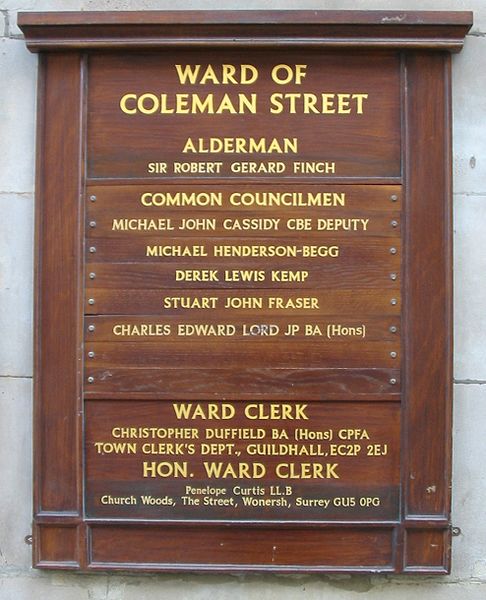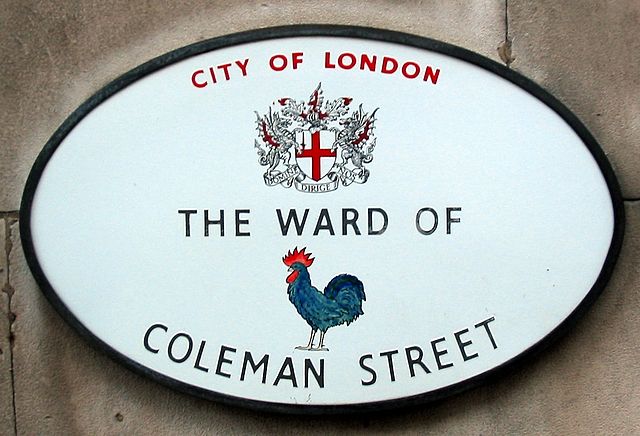Farringdon Without is the most westerly ward of the City of London, England. Its suffix Without reflects its origin as lying beyond the City's former defensive walls. It was first established in 1394 to administer the suburbs west of Ludgate and Newgate, including West Smithfield and Temple. This was achieved by splitting the very large, pre-existing Farringdon Ward into two parts, Farringdon Within and Farringdon Without. The large and prosperous extramural suburb of Farringdon Without has been described as having been London's first West End.
St Dunstan-in-the-West, one of the ward's historic churches.
Wards of the City of London
The City of London is divided into 25 wards. The city is the historic core of the much wider metropolis of Greater London, with an ancient and sui generis form of local government, which avoided the many local government reforms elsewhere in the country in the 19th and 20th centuries. Unlike other modern English local authorities, the City of London Corporation has two council bodies: the now largely ceremonial Court of Aldermen, and the Court of Common Council.
A wooden notice board (each ward has at least one) displaying the Alderman, the Common Councilmen (one of whom is the Alderman's Deputy), and the clerks of that ward.
In some places in the city, a plaque will state the local ward's name.
A statue of a cordwainer: the trade gave its name to Cordwainer ward.
Between 1550 and 1899, the City extended south of the Thames into Southwark, with the Ward of Bridge Without.





